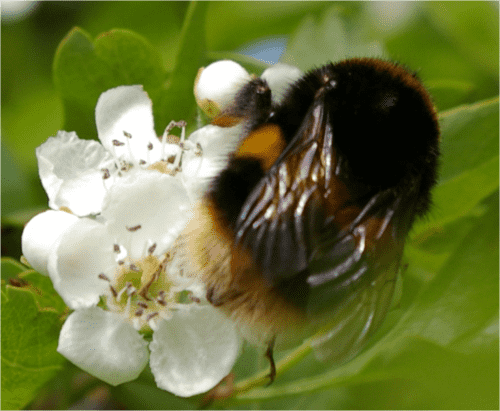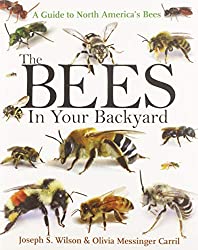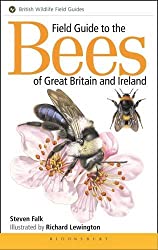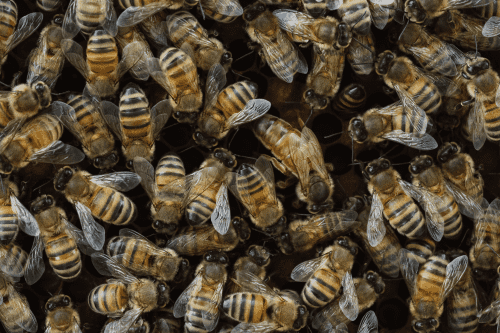Do Bumble Bees Eat Meat?
On my page about meat eating bees, I refer to a number of tropical stingless bee species (Meliponinae) and their consumption of meat (carrion) as a protein source.
I was most surprised however, to learn of an article describing incidents of bumble bees eating meat and other non-plant food sources in tropical and temperate regions.
Observations Of Bumble Bees Eating Meat And Other Non-Plant Food Sources
In an article entitled 'Bumble Bees Feeding On Non-Plant Food Sources'1, Professor Carlos Herrera of Estación Biológica de Doñana, Seville, Spain described a number of observations of bumble bees engaging in what might be considered unusual eating behaviours.
Tropical Bumble Bee Species: Bombus ephippiatus (Mesoamerican Bumble Bee)
According to Herrera's article, two Bombus ephippiatus workers were observed feeding on the semi-dried faeces of a coyote in a Quercus costaricensis (oak) dominated, patchy forest region of tropical highland in Costa Rica. The siting occurred in February 1986.
Temperate Bumble Bee Species, Bombus terrestris (Buff-tailed Bumble Bee)
 Bombus terrestris - Buff-tailed bumble bee
Bombus terrestris - Buff-tailed bumble beeIn 3 locations in south-eastern Spain, at an altitude ranging from 1100 to 1300m, again in a location of oak-dominated forest (Quercus ilex - 'evergreen oak' or 'holly oak'), Bombus terrestris were witnessed to feed on a range of non-plant food sources.
In April 1985, 7 Bombus terrestris workers were observed feeding on the rotting carcass of a wild goat. Huddled together at a hole in the goat's skin, the bees consumed the body fluid of the goat. In July 1987, a single Bombus terrestris was seen to feed on a dried bird dropping coated in urates, for about 20 minutes.
In December 1986, 55 Bombus terrestris queens and workers were witnessed drinking human urine. The incident occurred again when human urine was deposited in a second location 2m away from the first.
Reasons For Consumption Of Foods From Non-Plant Sources
The reason bees may switch to non-plant food sources is for access to the nutrients, particularly those nutrients required for the healthy development of larvae into adult bees.
This has already been proven to be the case for other bee species.
In 1982, Roubik2 proposed that the stingless bee, Trigona hypogea uses carrion instead of pollen as a protein source. Furthermore, this species of bee had evolved physical characteristics to enable the workers in the colony to collect suitable carrion, including toothed mandibles, yet no pollen baskets were present on the hind legs.
Honey bees have also been observed to collect dirty water for transportation to the colony, including urine-contaminated water3. It is proposed that dirty water offers the bees some of their required nutrients and minerals for healthy development, and that honey bees switch water foraging preference according to their requirements4.
References
1. Carlos M Herrera (1990) Bumble Bees Feeding on Non-Plant Food Sources, Bee World, 71:2, 67-69, DOI: 10.1080/0005772X.1990.11099039
2. Roubik DW. Obligate necrophagy in a social bee. Science. 1982 Sep 10;217(4564):1059-60. doi: 10.1126/science.217.4564.1059. PMID: 17839343.
3. Shankar, Uma. (2012). Why does Apis dorsata F. forage on brackish water and other non-conventional sources?. Current science. 102. 1350-1351.
4. BONOAN, R.E., TAI, T.M., TAGLE RODRIGUEZ, M., FELLER, L., DADDARIO, S.R., CZAJA, R.A., O'CONNOR, L.D., BURRUSS, G. and STARKS, P.T. (2017), Seasonality of salt foraging in honey bees (Apis mellifera). Ecol Entomol, 42: 195-201.


